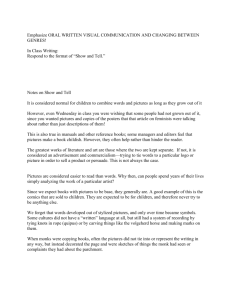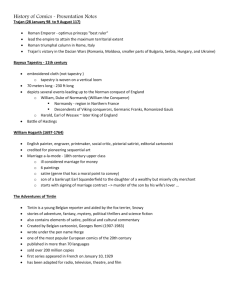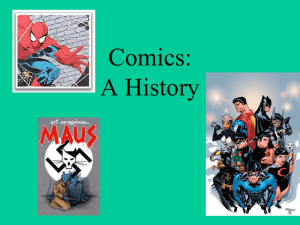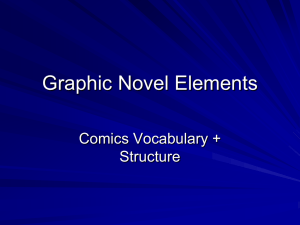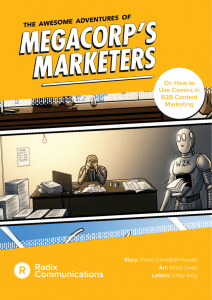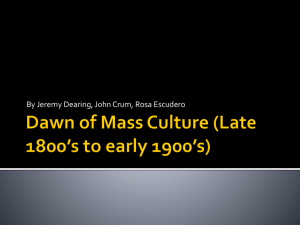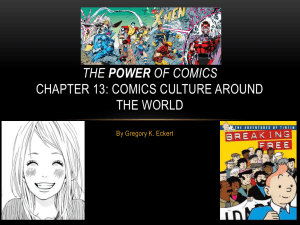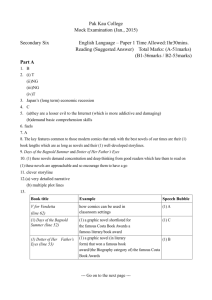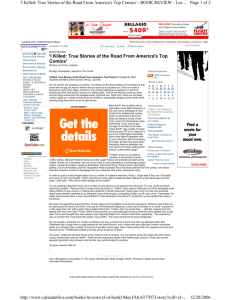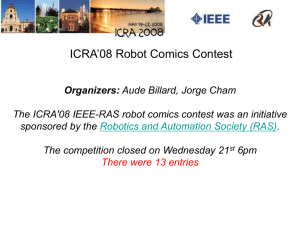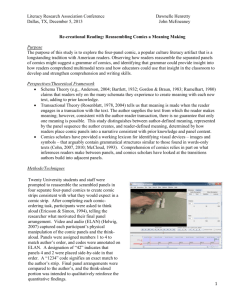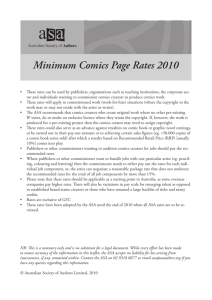Part 2
advertisement
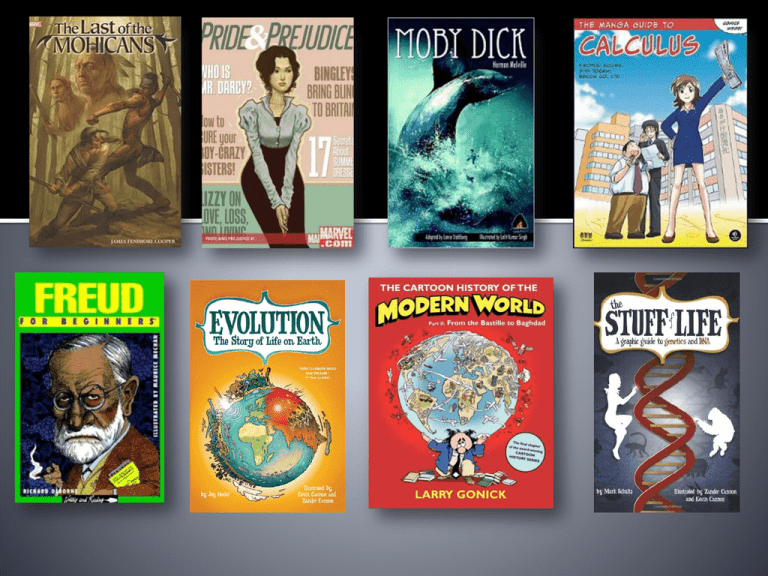
Comics A means of communicating with students challenged by traditional texts* and non-majors** A way to shake up the learning experience and add vibrancy to the classroom *Gretchen Schwarz, “Expanding Literacies through Graphic Novels,” The English Journal 95.6 (2006): 58-64. **Hosler, J, and K. B. Boomer. “Are Comic Books an Effective Way to Engage Nonmajors in Learning and Appreciating Science?” CBE Life Sciences Education 10.3 (2011): 309–317. Comics A means of communicating with students challenged by traditional texts* and non-majors** A way to shake up the learning experience and add vibrancy to the classroom Engages the student in an era of distraction*** *Gretchen Schwarz, “Expanding Literacies through Graphic Novels,” The English Journal 95.6 (2006): 58-64. **Hosler, J, and K. B. Boomer. “Are Comic Books an Effective Way to Engage Nonmajors in Learning and Appreciating Science?” CBE Life Sciences Education 10.3 (2011): 309–317. ***Jeremy Short and Terrie Reeves. “The Graphic Novel: A ‘Cool’ Format for Communicating to Generation Y,” Business Communications Quarterly 72.4 (2009): 414-430. Comics Comics as outsider texts* *Duffy, Damian. “Out of the Margins ... into the Panels: Toward a Theory of Comics as a Medium of Critical Pedagogy in Library Instruction.” Critical Library Instruction: Theories and Methods. Ed. Maria T. Accardi, Emily Drabinski, & Alana Kumbier. Duluth, MN: Library Juice Press, 2010. 199–219. Comics Comics as outsider texts* Participatory** *Duffy, Damian. “Out of the Margins ... into the Panels: Toward a Theory of Comics as a Medium of Critical Pedagogy in Library Instruction.” Critical Library Instruction: Theories and Methods. Ed. Maria T. Accardi, Emily Drabinski, & Alana Kumbier. Duluth, MN: Library Juice Press, 2010. 199–219. **S. W. Smith. “Academaesthetics: How the Essay and Comic can Save Each Other.” Text, 11.2 (2007): 1–55. Comics Comics as outsider texts* Participatory** Promotion/Advocacy (Join Lizz Zitron and me for a discussion of Innovative Outreach: 4 -5 TODAY in Palm Garden Ballroom D *Duffy, Damian. “Out of the Margins ... into the Panels: Toward a Theory of Comics as a Medium of Critical Pedagogy in Library Instruction.” Critical Library Instruction: Theories and Methods. Ed. Maria T. Accardi, Emily Drabinski, & Alana Kumbier. Duluth, MN: Library Juice Press, 2010. 199–219. **S. W. Smith. “Academaesthetics: How the Essay and Comic can Save Each Other.” Text, 11.2 (2007): 1–55. Narrative Modeling behavior Situational Motivation Multiple Voices and Viewpoints Fictionalizing to provide context* Retention and recall** Coming to terms with our own illiteracy*** *Tabachnick, Stephen E. “A Comic - Book World.” World Literature Today 81.2 (2007): 24–28. **Negrete, Aquiles, and Cecilia Lartigue. “Learning from Education to Communicate Science as a Good Story.” Endeavour 28.3 (2004): 120–124. ***Smith, S. W. “Academaesthetics: How the Essay and Comic can Save Each Other.” Text, 11.2 (2007): 1–55. Humor* Expressing personality *Adapted from Vossler, J. J., & Sheidlower, S. (2011). Humor and information literacy: Practical techniques for library instruction. Santa Barbara, Calif: Libraries Unlimited. Humor* Expressing personality Establishing trust *Adapted from Vossler, J. J., & Sheidlower, S. (2011). Humor and information literacy: Practical techniques for library instruction. Santa Barbara, Calif: Libraries Unlimited. Humor* Expressing personality Establishing trust Delivery and competence *Adapted from Vossler, J. J., & Sheidlower, S. (2011). Humor and information literacy: Practical techniques for library instruction. Santa Barbara, Calif: Libraries Unlimited.
